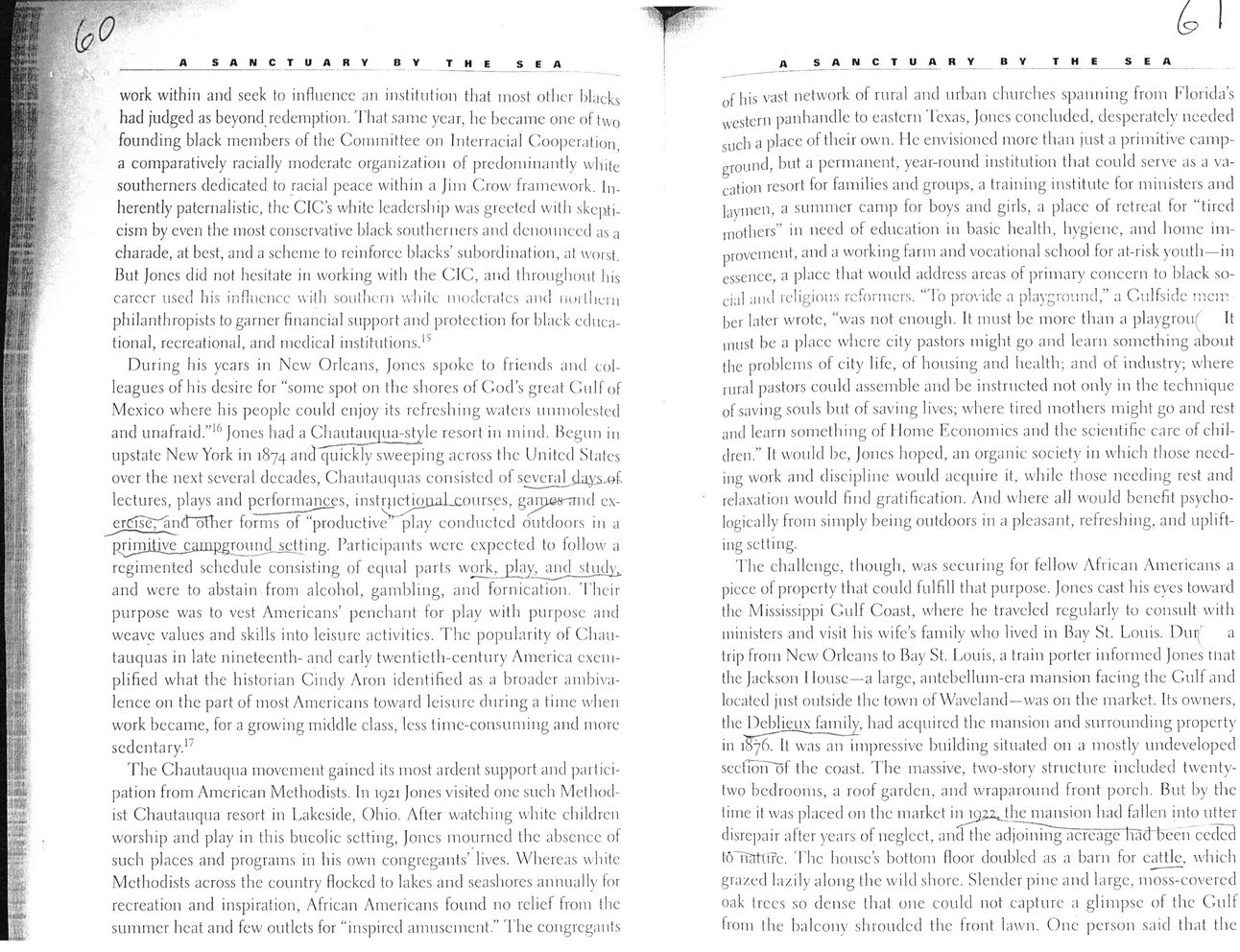This text was obtained via automated optical character recognition.
It has not been edited and may therefore contain several errors.
work within and seek to influence an institution that most other blacks had judged as beyond redemption. That same year, he became one of two founding black members of the Committee on Interracial Cooperation a comparatively racially moderate organization of predominantly white southerners dedicated to racial peace within a Jim Crow framework. Inherently paternalistic, the CIC’s white leadership was greeted with skepticism by even the most conservative black southerners and denounced as a charade, at best, and a scheme to reinforce blacks’ subordination, at worst. But Jones did not hesitate in working with the CIC, and throughout his career used his influence wilh southern white modcralcs and northern philanthropists to garner financial support and protection for black educational, recreational, and mcdical institutions.15 During his years in New Orleans, Jones spoke to friends and colleagues of his desire for “some spot on the shores of Cod’s great Gulf of Mexico where his people could enjoy its refreshing waters unmolested and unafraid.”16 Jones had a Chautauqua-style resort in mind. Begun in upstate New York in 1874 and quickly sweeping across the United States over the next several decades, Chautauquas consisted of sevcra]^day.'s.9f lectures, plays and performances. instr^ctiouaLcourses, garpe^rn’iid ex-erCT?eTiind~oFher forms of “productive play conducted outdoors in a primitive campground setting. Participants were cxpected to follow a regimented schedule consisting of equal parts work, play, and_stuch^ and were to abstain from alcohol, gambling, and fornication. Their purpose was to vest Americans’ penchant for play with purpose and weave values and skills into leisure activities. The popularity of Chautauquas in late nineteenth- and early twentieth-century America exemplified what the historian Cindy Aron identified as a broader ambivalence on the part of most Americans toward leisure during a time when work became, for a growing middle class, less time-consuming and more sedentary.1' The Chautauqua movement gained its most ardent support and participation from American Methodists. In 1921 Jones visited one such Methodist Chautauqua resort in Lakeside, Ohio. After watching white children worship and play in this bucolic setting, Jones mourned the absence of such places and programs in his own congregants’ lives. Whereas white Methodists across the country flocked to lakes and seashores annually for recreation and inspiration, African Americans found 110 relief from the summer heat and few outlets for “inspired amusement.” The congrcgants £ I A SANCTUARY B Y TH E SEA 0f his vast network of rural and urban churches spanning from Florida’s western panhandle to eastern Texas, Jones concluded, desperately needed such a place of their own. He envisioned more than just a primitive campground, but a permanent, year-round institution that could serve as a vacation resort for families and groups, a training institute for ministers and laymen, a summer camp for boys and girls, a place of retreat for “tired mothers” in need of education in basic health, hygiene, and home improvement, and a working farm and vocational school for at-risk youth —in essence, a place that would address areas of primary concern to black social and religious reformers. “To provide a playground,” a Gulfside men”: her later wrote, “was not enough. It must be more than a playgroup It must be a place where city pastors might go and learn something about the problems of eity life, of housing and health; and of industry; where rural pastors could assemble and be instructed not only in the technique of saving souls but of saving lives; where tired mothers might go and rest and learn something of Home Economics and the scientific care of children.” It would be, Jones hoped, an organic society in which those needing work and discipline would acquire it, while those needing rest and relaxation would find gratification. And where all would benefit psychologically from simply being outdoors in a pleasant, refreshing, and uplifting setting. The challenge, though, was securing for fellow African Americans a piece of property that could fulfill that purpose. Jones cast his eyes toward the Mississippi Gulf Coast, where he traveled regularly to consult with ministers and visit his wife’s family who lived in Bay St. Louis. Dur’ a trip from New Orleans to Bay St. Louis, a train porter informed Jones tnat the Jackson I louse—a large, antebellum-era mansion facing the Gulf and loeated just outside the town of Waveland—was on the market. Its owners, the Dcblieux family, had acquired the mansion and surrounding property in $7677Twas arTimpressive building situated on a mostly undeveloped scctiorTof the coast. The massive, two-story structure included twenty-two bedrooms, a roof garden, and wraparound front porch. But by the time it was placed on the market injejiz^jhe mansion had fallen into utter disrepair after years of neglect, and the adjoining acreage iTad'been ceded UVnattfrc. The house’s bottom floor doubled as a barn for cattle, which grazed lazily along the wild shore. Slender pine and large, moss-covered oak trees so dense that one could not capture a glimpse of the Gulf from the balcony shrouded the front lawn. One person said that the

Gulfside Methodist Assembly Land-was-Ours---book-Kahrl-(02)